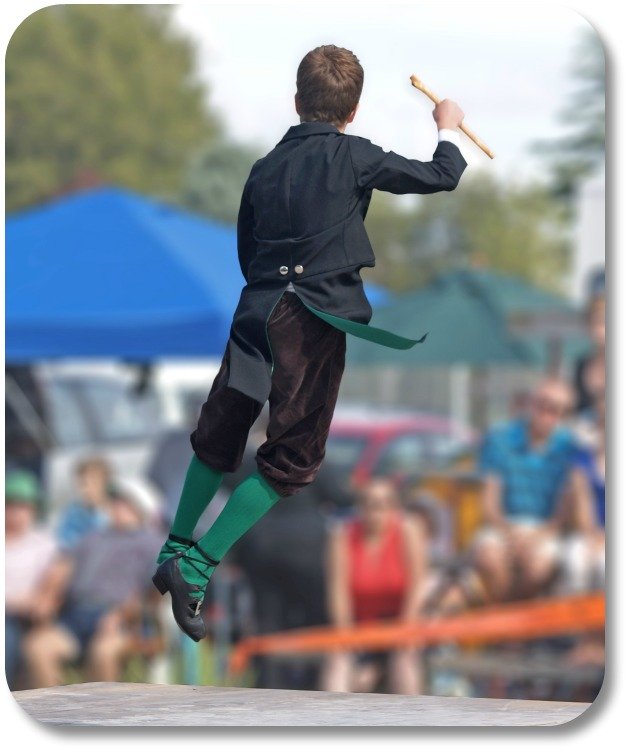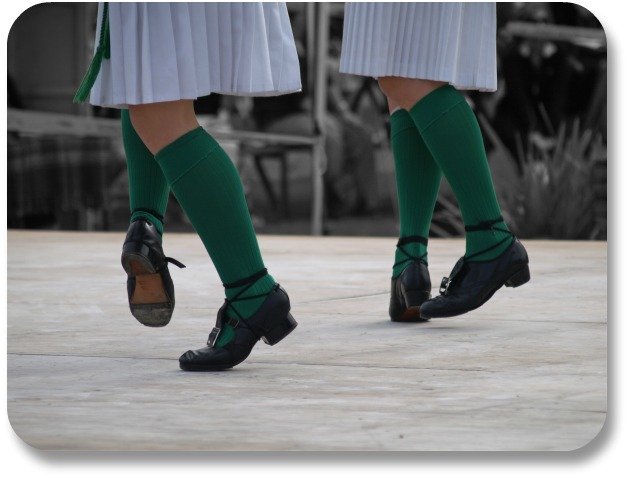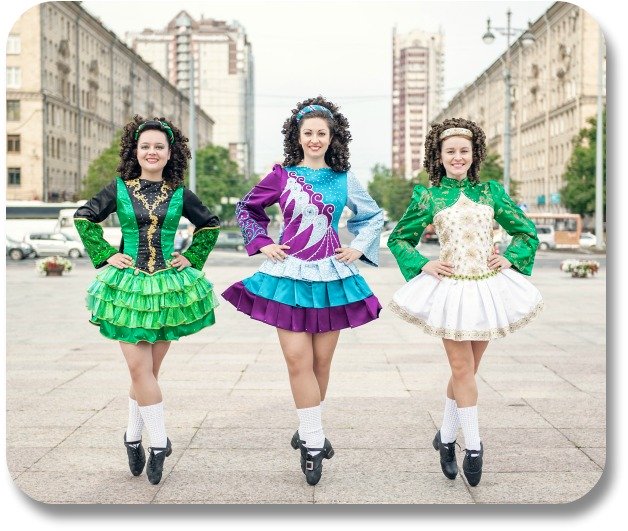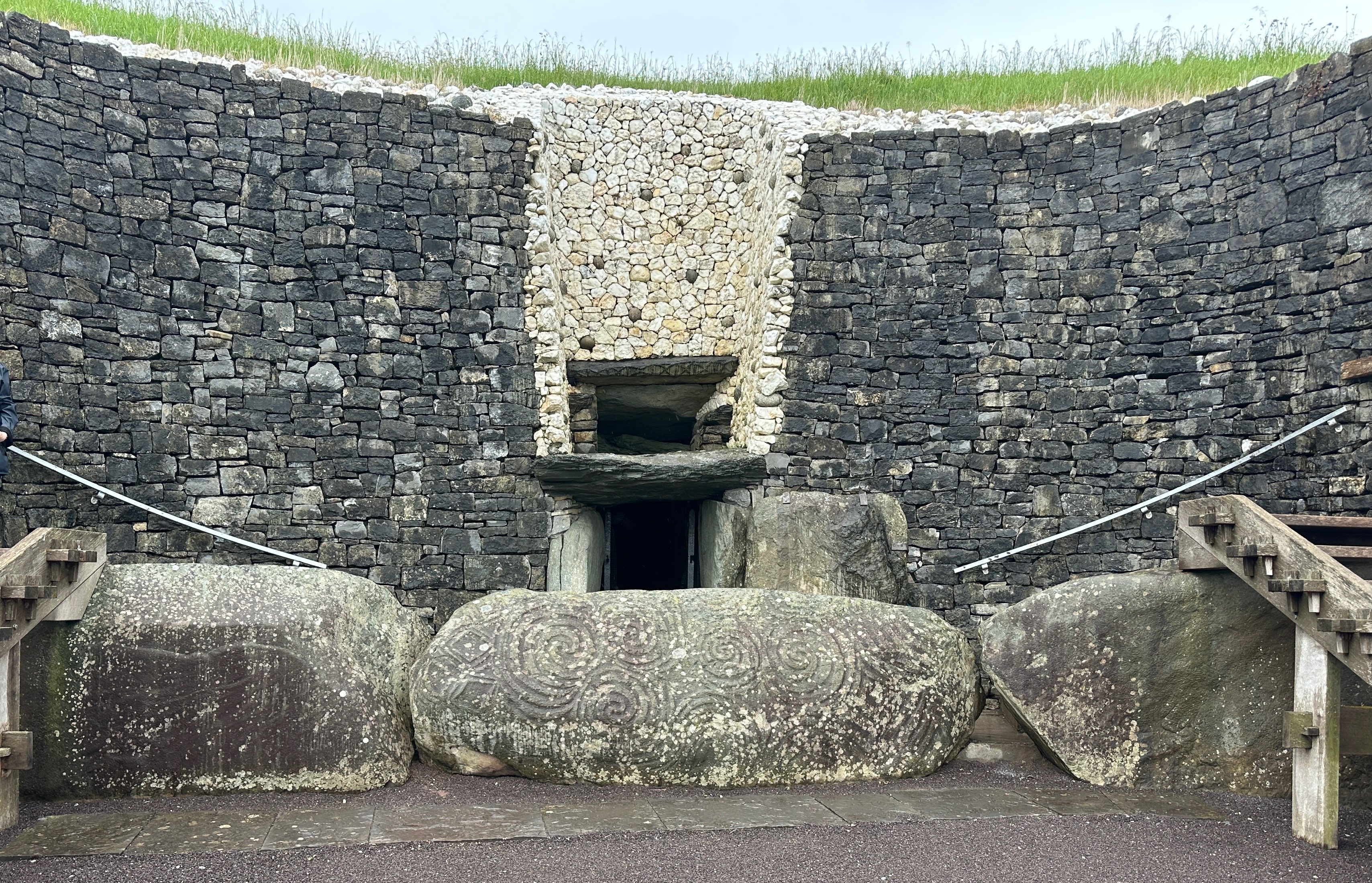- Home
- Irish Culture and Customs
- Irish Dance Types
- Irish Jig
The Irish Jig: Probably the Most Distinctive Dance Style Around!
We Irish love to dance, and the Irish jig is one of our favorite styles. A lively folk dance enjoyed by both country and city people, the jig invokes a sense of camaraderie among the
dancers, vigorous yet fun physical activity and an unmistakable sense of Irish pride.
We All Have a Unique and Personal "Irish Side."
What is an Irish Jig? Definition and History.
The etymology of “jig” comes from either the French word for jump (giguer)
or its Italian counterpart (giga). It is an appropriate name for this
particular Irish dance as most of the steps involve lively jumping coupled with
complex footwork while the upper body remains relatively steady.
During the 16th century in England, the jig was danced in 12/8 time although it was later revised to 6/8 time and even 9/8 time. The dance was introduced in Ireland and Scotland during the 17th century where it soon became closely associated with these nations.
In Irish culture, the jig is second only in popularity to the reel during traditional dance events, whether these are in formal competitions or in informal situations.
Proper "Jiggy" Attire
In informal situations, dancers of the jig can dress any way they like. Jeans and shirts coupled with soft shoes will do when in a pub with a good-sized dance floor.
The dress code for jig dancers is different during competitions and country fairs, however, so be prepared to purchase – or borrow, if you want – the proper attire.
Traditional Attire For the Men
- Tail coat in red or green
- Waist coat, which should be the opposite color of the tail coat
- Trousers known as knee britches
- Green stockings
- Muffler in either red or paisley design
- Paddy style hat
- Jig shoes in either red, green or black
Traditional Attire For the Women
- Dress in white, red or green (i.e., green skirt with white blouse coupled with a small cape)
- White apron
- Full cotton underskirts coupled with white pants
- Tights in red, green or natural color
- Jig shoes either in red, green or black (without taps)
The vibrant colors of jig attire reflect the Irish love for life itself. When dancing the jig, be joyful - even if you don't know the steps!
Types of Irish Jigs
There are SO many different variations! The most precise way to describe the differences between them is with rhythm and metre. The 'single jig' is performed in 12/8 time, while double jigs are 6/8 and slip jigs are 9/8.
Some jigs are performed in soft shoes (light jig, slip jig) while others are performed in hard shoes (treble jig). The music can be described as a jig whether or not there is a dance being performed.
Soft Shoe Jigs
Light jigs and slip jigs are both performed in soft shoes. The main difference between the two is the tempo and motion of the dance.
Light jigs are typically performed in 6/8 time, involve lightening-fast footwork and have a more vertical, up and down motion. Slip jigs are typically performed in 9/8 time and have a more relaxed and flowing motion suggestive of ballet.
Hard Shoe Jigs
A Treble jig is performed in hard shoes, typically in 6/8 time. It is characterized by a more syncopated rhythm (as opposed to evenly spaced triplets). It is also known as a 'hard' jig, in contrast to the 'light' jig described above.
Keep in mind that several jigs can be strung together to form a single set, which means that the flow of music and dance can be uninterrupted for quite some time. Be prepared because the dance requires stamina and endurance!
What's Next?
This section covered one specific type of Irish dance - there are many more! What is the one thing nearly all Irish dance forms have in common? Visit our section on types of Irish dances to find out!
More Fun With Irish Expressions:
Your Irish Expressions Playbook
Congratulations on learning more about the Emerald Isle and discovering what we like to call your "Irish Side." You may be thinking "I'd love to actually VISIT Ireland but that's really not in the cards right now. What am I supposed to do with the stuff I just learned?"
Well never fear! Since 2007 we have collected all of the best printable, shareable resources we could find, to help you put your new knowledge of Ireland to good use. We've put them all together in a single download we call "Your Irish Expressions Playbook," which contains over 100 pages of games, puzzles, recipes, songbooks, quizzes, travel guides and much, much more.

Purchase them ALL for one small price, print as many copies as you like and share them with your friends - with no limitations! But order soon - we are already adding to the Playbook for future editions and this price will not last long.
Oh, want one more reason to order right away? If you buy YOUR copy of the Playbook now, you will be allowed to upgrade to any new future edition for FREE.
PRO TIP: Be sure to click the 'return to merchant' button following checkout, to ensure you are routed to the page where you can download your Playbook. Any issues? Just reach out to us at support@irish-expressions.com and we will make it right.
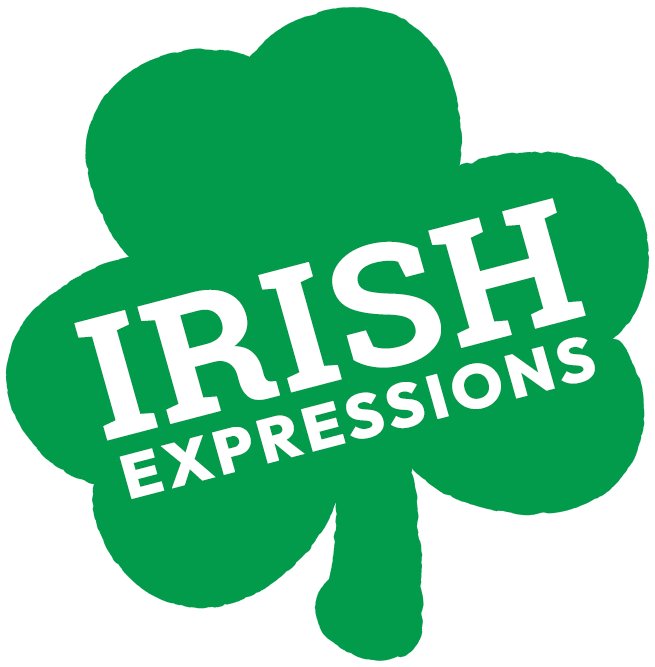
Please Share Your Feedback
Did we miss anything? Is there a topic you would like us to cover in the future? Tap HERE to let us know!
